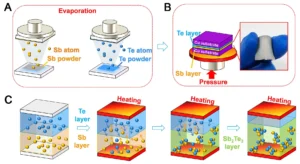In the realm of particle physics, the universe reveals its fundamental constituents through a delicate interplay of subatomic particles. Among these, the electron, proton, and neutron stand as the cornerstones upon which our understanding of matter is built. Their discovery and subsequent exploration have revolutionised our comprehension of the microscopic world, laying the groundwork for modern physics. In this article, we delve into the fascinating journey of the electron, proton, and neutron, from their discovery to their pivotal roles in shaping the universe as we know it.
Resistors: The Limiters of Current
The electron, a negatively charged subatomic particle, is one of the most ubiquitous entities in the universe. Its discovery marked a significant milestone in the field of physics. In 1897, the British physicist J.J. Thomson conducted groundbreaking experiments that led to the identification of the electron. Using cathode ray tubes, Thomson observed streams of charged particles moving from the negatively charged electrode (cathode) to the positively charged electrode (anode). He concluded that these particles were fundamental constituents of atoms and carried a negative charge, thus coining the term “electron.” Thomson’s discovery laid the foundation for the development of modern atomic theory and led to a deeper understanding of electricity and magnetism.
The Proton:
The proton, a positively charged subatomic particle found in the nucleus of an atom, was discovered later than the electron. In 1919, the New Zealand physicist Ernest Rutherford conducted experiments involving the bombardment of nitrogen gas with alpha particles. Through meticulous observation of the scattering patterns of these alpha particles, Rutherford inferred the presence of a dense, positively charged nucleus within the atom. He postulated the existence of a positively charged particle within the nucleus, which he named the “proton.” Rutherford’s discovery revolutionised our understanding of atomic structure, laying the groundwork for the development of nuclear physics and the atomic model.
The Neutron:
The neutron, a neutral subatomic particle residing in the nucleus of an atom alongside protons, completes the triad of fundamental particles found within atoms. Its discovery in 1932 by the English physicist James Chadwick was a pivotal moment in the history of nuclear physics. Chadwick conducted experiments involving the bombardment of beryllium with alpha particles, which resulted in the emission of a previously unknown radiation. Through meticulous analysis of this radiation, Chadwick concluded that it consisted of neutral particles with a mass similar to that of protons. He named these particles “neutrons,” highlighting their lack of electric charge. Chadwick’s discovery revolutionised our understanding of nuclear reactions, paving the way for advancements in nuclear energy and particle physics.
Conclusion:
The discovery of the electron, proton, and neutron represents a triumph of human curiosity and scientific ingenuity. These fundamental particles form the building blocks of matter and underpin our understanding of the universe at its most fundamental level. From the pioneering experiments of Thomson and Rutherford to the groundbreaking work of Chadwick, each discovery has reshaped the landscape of physics and propelled humanity towards new frontiers of knowledge. As we continue to unravel the mysteries of the cosmos, the electron, proton, and neutron stand as enduring symbols of our quest to understand the fundamental nature of reality.




